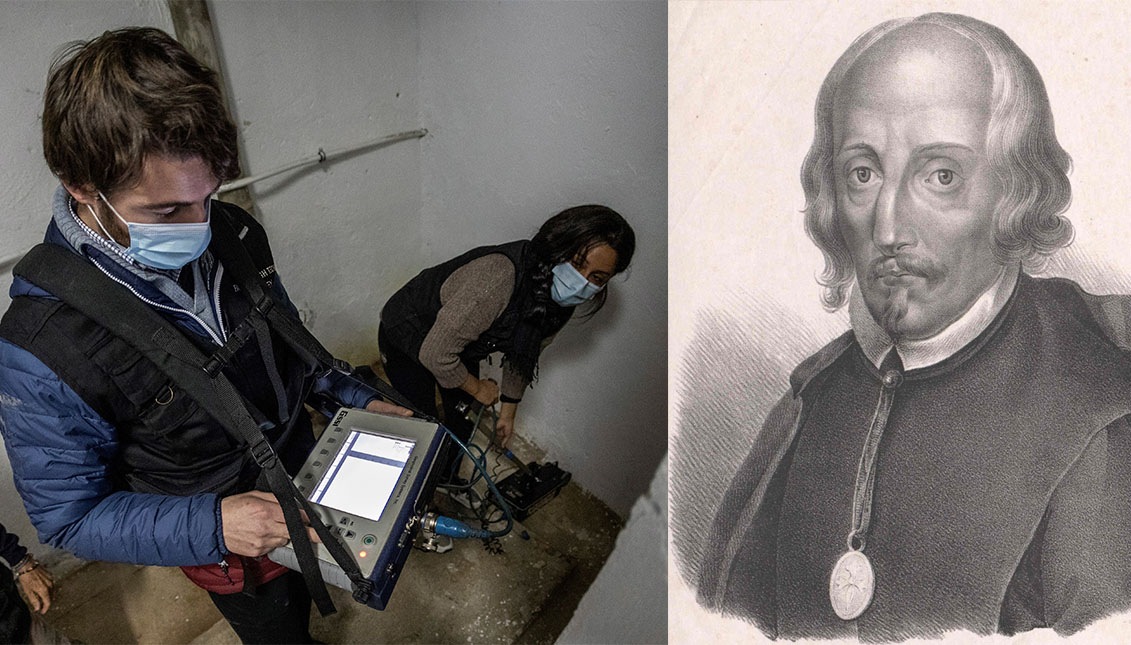
Where are the remains of Calderón de la Barca?
A key could be the key to this post-mortem mystery that seems to be taken from one of the scripts of the colossal Spanish playwright.
In Life is a Dream, the greatest work of Spanish playwright, Pedro Calderón de la Barca — at the time a soldier, priest, and womanizer — he invites viewers to rid themselves of the idea of destiny and embrace free will as part of the human condition.
It is therefore curious that, after his death in 1681, his remains mysteriously disappeared in 1936, at the beginning of the Spanish Civil War. For decades, seasoned researchers have searched for them.
Now, an enigmatic key found in a chest could be the definitive clue.
Researchers at the San Pablo CEU University reported on Jan. 18 that they had found a chest that belonged to the Spanish playwright, and inside, they found the key that opens, they said, the burial chest that was given to his family during one of the many exhumations and transfers of remains.
The chest also contained an inscription confirming that it was made for the first of the body's transfers.
"The existence of this chest with the 19th century key was known to the project director. However, the chest and the key had been stolen from the family during the Civil War. The family was also aware of its claim in 1939 to the Servicio de Defensa del Patrimonio Histórico (Historical Heritage Defence Service). But until now the photograph had never been made public, nor was there any graphic documentation of the urn or the key," a statement explained.
Since Calderón's brotherhood, the Congregación de San Pedro Apóstol, buried his remains in the 17th century in a church in Madrid, his coffin was moved to five other places.
It was finally decided that the bones should rest in a marble urn in the church of Nuestra Señora de los Dolores in the Spanish capital.
The outbreak of the Civil War led to many church burnings and anticlerical violence, and Nuestra Señora de los Dolores met a similar fate after the murder of several priests. At that point, anyone could imagine the urn going up in flames and the ashes disappearing forever.
However, Professor Pablo Sánchez Garrido, of the San Pablo CEU University, always harbored doubts. Especially when he found a tombstone in the reconstructed church indicating that Calderón's remains had been there, but were lost in the fire of 1936.
After two years of research, Garrido came across a book written by a chaplain of the congregation to which the writer belonged in the 1960s and questioned the official version of the burning of the remains.
RELATED CONTENT
"There is a part of the book in which one of the priests of the congregation, who is on his deathbed, says: 'Don't worry, Calderón's remains were not lost. I was there for the 1902 burial and the remains were never put in the marble casket. That was only symbolic'," the academic explained to The Guardian.
The priest also said that Calderón's coffin was hidden in the walls of the church, but he never showed them where.
Eager to uncover the mystery, Garrido consulted a geophysicist, Luis Avial, with whom he had worked with in the search for another lost literary genius, Cervantes.
Despite the pandemic and heavy snowfall in the Spanish capital, Avial scanned Nuestra Señora de los Dolores using radar equipment without finding more than a few irregularities.
However, when Countess Teresa Morenés and Urquijo turned up with the mysterious chest containing the key to the coffin, the investigation took an unexpected turn.
"It would be incredible to find the coffin and open it with this key," said Sánchez Garrido.
The reflection is necessary: If only a few teenagers who reach the last years of secondary education in the branch of letters study Calderón's work and literature has disappeared from most curricula, will this discovery serve to recover the figure of an essential writer?











LEAVE A COMMENT: